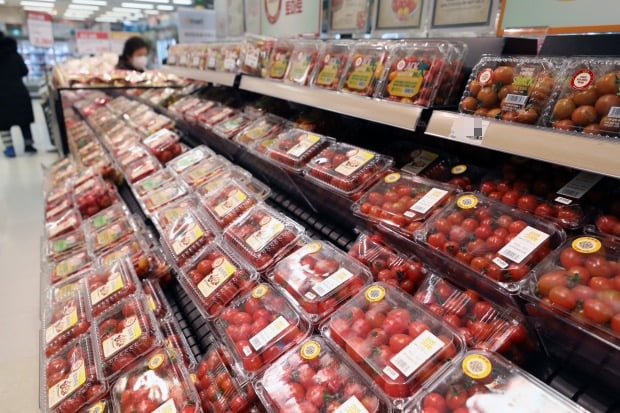
Photo = News 1
‘Parm Air Hankyung’, a domestic agricultural product price information system, is becoming a’eye of innovation’ in the agricultural product distribution market, which has been operated in an old fashioned fashion. In addition to providing accurate real-time transaction prices in the wholesale and retail market, it also provides forward-looking information, which is a means of fundamentally changing the basis for purchasing and selling decisions of related companies and farmers. Experts are evaluating as “a foothold to leap forward from the primary industry, agriculture, to the fourth innovative industry that will be exported to the global market.”

Potato Sweet Potato Lettuce More

‘Farm Air Hankyung’, jointly created by the Korea Economic Daily and Farm Air, an agricultural product data analysis company, collects big data from the distribution of agricultural products and analyzes it with artificial intelligence (AI) to predict future prices.
Among these, predictive data has not been attempted by any institution and has not succeeded. Farm Air Hankyung predicts future prices by processing big data such as major agricultural product price data, weather data for each region of the Meteorological Administration, exchange rate data, and import and export data. Market prices of 22 items are predicted by dividing them into short and long term. As a result of operating the artificial intelligence (AI) system for 8 months in April, 18 out of 22 products produced a result of a 10% margin of error in the 3-month market price forecast.
According to Farm Air Hankyung’s AI, the potato price, which is 1586 won per kilogram, rises to 1900 won after two months. One kilogram of sweet potatoes is expected to exceed 3000 won from 2756 won. It is analyzed that the price of lettuce, which is in the 1600 won range, exceeds 2,000 won after one month, and then the price will turn downward from mid-March.
Apples, grapes, onions, garlic, Chinese cabbage, paprika, and other crops that were on the rise, turned downward from early March. The price of apples is expected to be 40% more expensive in early March than now, then drop by about 10% by the end of March. Grape and cabbage prices are down by 8.6% and 3.2%, respectively, while onions and paprika are 20% cheaper than now.
“Channel to lead agriculture to the fourth industry”
Farm Air Hankyung’s AI system is evaluated for breaking thousands of years of belief that’farming is the will of the sky’ and turning agriculture into a predictable industry. Companies that purchase large quantities of agricultural products can use predictive information as data to decide when to purchase specific agricultural products, and the government can use it as basic data for stabilizing the prices of agricultural products that repeat the sharp rise and fall every year.
Farm Air Hankyung’s prediction system was built to strengthen future agricultural competitiveness. In order to make agriculture a fourth industry that can be active on the world stage, rather than a primary industry that the government should help with, data-based supply and demand control and a scientific distribution structure must be prioritized. The rate of contract cultivation, which companies cultivate through a fixed contract with farmers, is still in the 20% range.
The monthly “Agricultural Observation” data released by the Rural Economic Research Institute shows wholesale prices, imports, production and storage by variety based on historical data. In the data published in December,’November prices rose 50% compared to the previous year’. The outlook for shipments is coming out, but the industry points out that this is not data-based, so it is not enough to use it as a purchase decision data.
An official in the distribution industry said, “It is difficult to increase the proportion of contract cultivation because market analysis and forecasting information is unstable every year.” “If the purchase structure based on data is completed, it will be a win-win for both farmers and companies.”
Expected prices,’soldering thread supply and demand management’ until when
The domestic agricultural product distribution market is still in the backward stage. The government spends trillions of dollars on the budget for the supply and demand management and stockpiling of agricultural products, which repeatedly plunges and surges every year. Firms do not have a clear criterion for price, making a rational decision system impossible. For example, onions, which have risen more than 70% in price from the previous year, are one of the crops with a large difference in time between the producing region and the government. The estimates of the Ministry of Agriculture, Food and Rural Affairs about the increase in production and the perspectives of producers and distributors are all different.
The current sharp rise in agricultural product prices is foreseen. Farming nations across the country missed the time of sowing and harvesting due to the abnormal climate that lasted from spring to winter. It is pointed out that as the consumption of food ingredients in the home increased due to Corona 19, countermeasures were needed.
A problem is also pointed out that’soldering-style supply and demand control’, which relies only on imported agricultural products. According to the data of’Agricultural Products Purchase and Stockpile’, analyzed by Democratic Party lawmaker Sang-Gon Moon, the Ministry of Agriculture and Food bought 203,000 tons of domestic agricultural products as of August last year, while the import stockpile reached 1355,000 tons. Imported agricultural products amount to 6.7 times the amount of domestic stocks. “It is difficult to expect policy effects such as stabilization of agricultural product prices with less than 1% of the stockpiling amount,” said Congressman.
Reporter Bora Kim [email protected]
